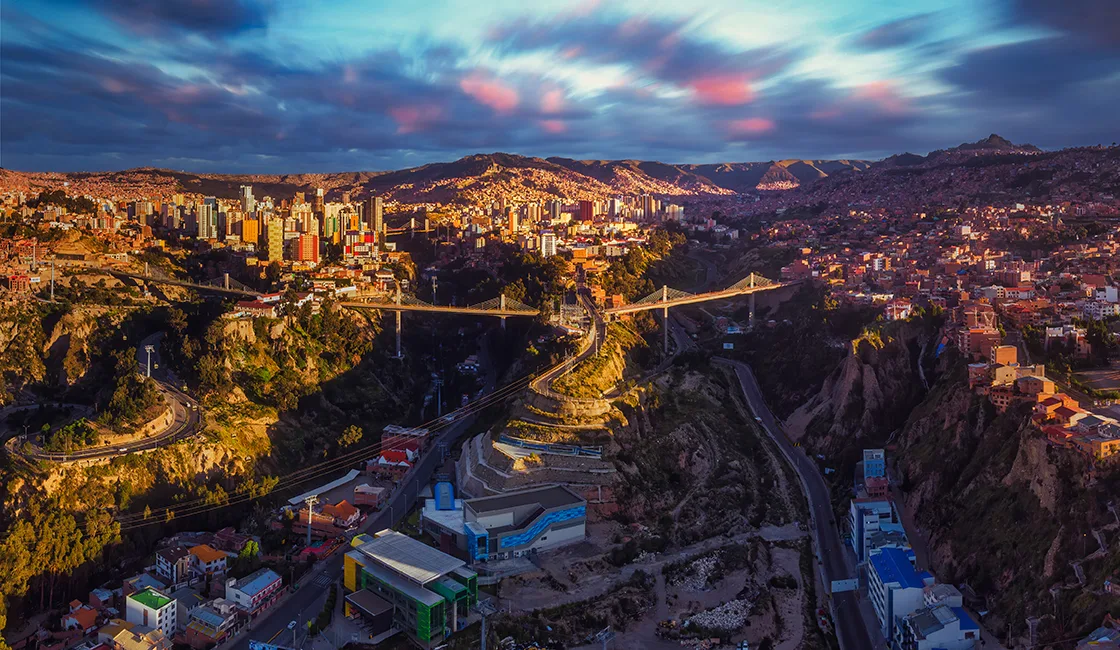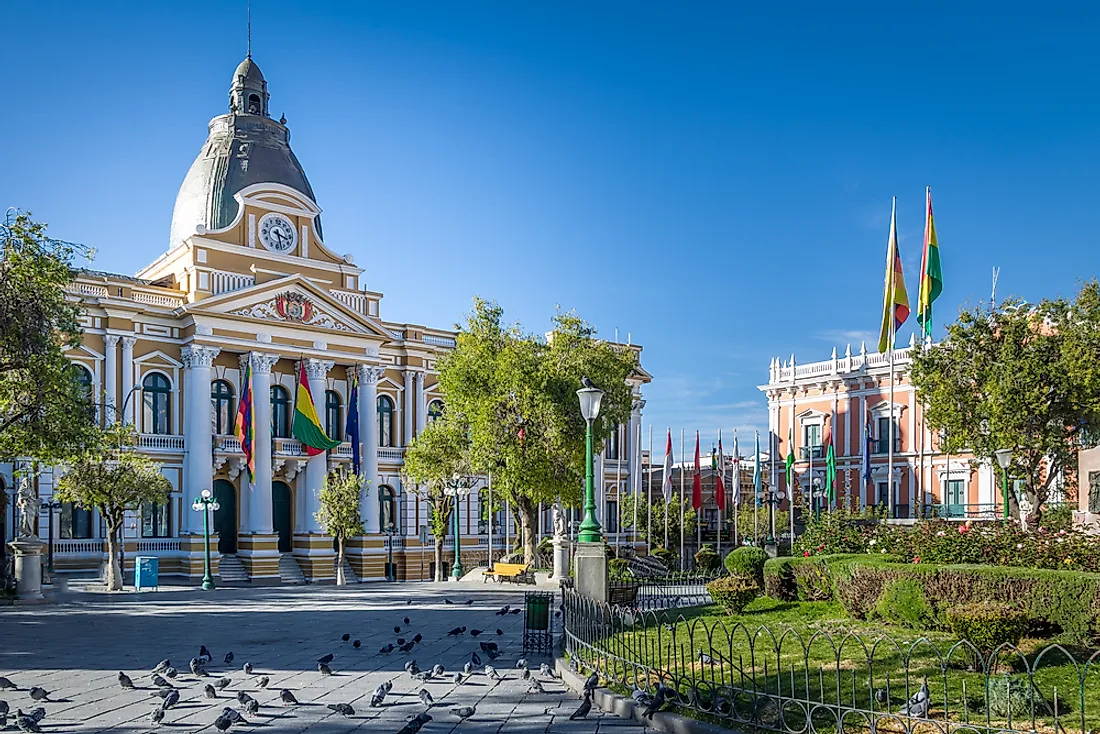The capital of Bolivia was officially divided in 1898 – Sucre retained the status of the capital, and La Paz received it. In fact, the central authorities began to move to La Paz since the independence of Bolivia in 1825.
This process was not at all connected with any parochial separatism. Sucre became the capital of an independent state, as if by inertia. Even under the Spaniards, the city, which at different times was called Nuevo Toledo, Charcas, La Plata, and from 1825 to 1839 Chuquisaca, was the center of the “silver” province – silver was mined in the neighboring city of Potosi from the middle of the 16th century.
Over time, the deposits of the noble metal were depleted, and tin was found in the vicinity of La Paz. Authorities and financial magnates (and in Latin America it is very difficult to draw a line between them) gradually moved to a new source of income. Sucre, in compensation, was left the Supreme Court of Bolivia and the title of constitutional capital. The Bolivians themselves consider the capital of their country the city of La Paz.
La Paz is the de facto capital of Bolivia

Bolivia is a country unique in its geographical and geological features. Where, for example, the entrance to the mines involved in the extraction of minerals can be located at an altitude of 4,000 meters? In Bolivia, on the other hand, millions of people live in highlands, and feel good at the same time.
Even a brief description of the location of La Paz causes involuntary respect: the city is located on the banks of the La Paz River at an altitude of 3,600 meters in the crater of a volcano extinct many years ago. And in the Alps, at an altitude of 2,700 meters, the line of eternal snow begins.
La Paz was founded by the Spaniards in 1548. The founder of the city, Alonso De Mendoza, did not become modest and named the future capital of Bolivia – Nuestra Señora de La Paz – Our Lady of Peace.
Traces of the colonial rule of the Spaniards remained in La Paz and throughout Bolivia in the form of numerous architectural and historical monuments and even more numerous mestizos (about a third of the city’s population).
Plaza Murillo – the heart of La Paz
Plaza Murillo is the historic heart of La Paz. It is formed by the buildings of the Cathedral, the National Congress, the Presidential Palace and the National Museum of Art. The square is named after Pedro Murillo, who fought for independence from Spain and was executed on this square. The list of those executed is not limited to Murillo. At one time, a number of revolutionaries and even one president were hanged on the square.
Despite its historical significance, the square is rather a cozy square with lots of greenery and thousands of pigeons.
The Burnt Palace is the official residence of the President of Bolivia.
The presidential palace in La Paz is called the Quemado Palace, i.e. “burnt” (Spanish Palacio Quemado) – in 1875 it was indeed burned during the next uprising.
The building was built for 200 years, then demolished and a new one built. It was this that fell victim to the fire. The reconstruction was completed only in 1899, in time for the main authorities to move to La Paz. In the 20th century, the palace was repeatedly reconstructed without changing its appearance.
The facade of the palace, standing on Murillo Square, is made in the neoclassical style. The interiors are decorated in various styles.
There is a small Presidential Museum. The Red Room is open for visits, where ceremonial receptions are held, and the Mirror Hall for protocol events.
National Congress
The building of the Bolivian legislature, consisting of two chambers, is located opposite the presidential palace. Interestingly, in Bolivia, the prime minister works in the same building as the president, and the government works in the same building as the parliament.

At various times, the building, built as an imitation of the Roman Capitol, housed various institutions and even a prison. A curious detail of the building is the clock, the hands of which go in the “wrong” direction.
Church and Monastery of Saint Francis
The first temple, which was founded on this site by the Franciscan monks in 1549, collapsed due to heavy snowfalls, as the builders did not take into account the climatic features of the region. The construction of the current Catholic church was completed in 1784.
Its façade combines baroque features and folk motifs – the columns are entwined with floral ornaments, and on the walls there are images of birds and animals, including fictitious ones. Inside, the church of St. Francis looks rather modest, but from the roof of the temple there is a beautiful view of La Paz, you can also take a walk in the garden in the courtyard of the monastery.
Witch Market
At the Witch Market of La Paz, witches, sorcerers, shamans and other contactees with other worlds sell completely material amulets, necklaces, talismans, amulets and other attributes.
In fact, witches and sorcerers are a good advertisement – mostly they sell items of folk life and art on the market. These are silver jewelry, various figurines and figurines, clothes made from the wool of alpine animals.
